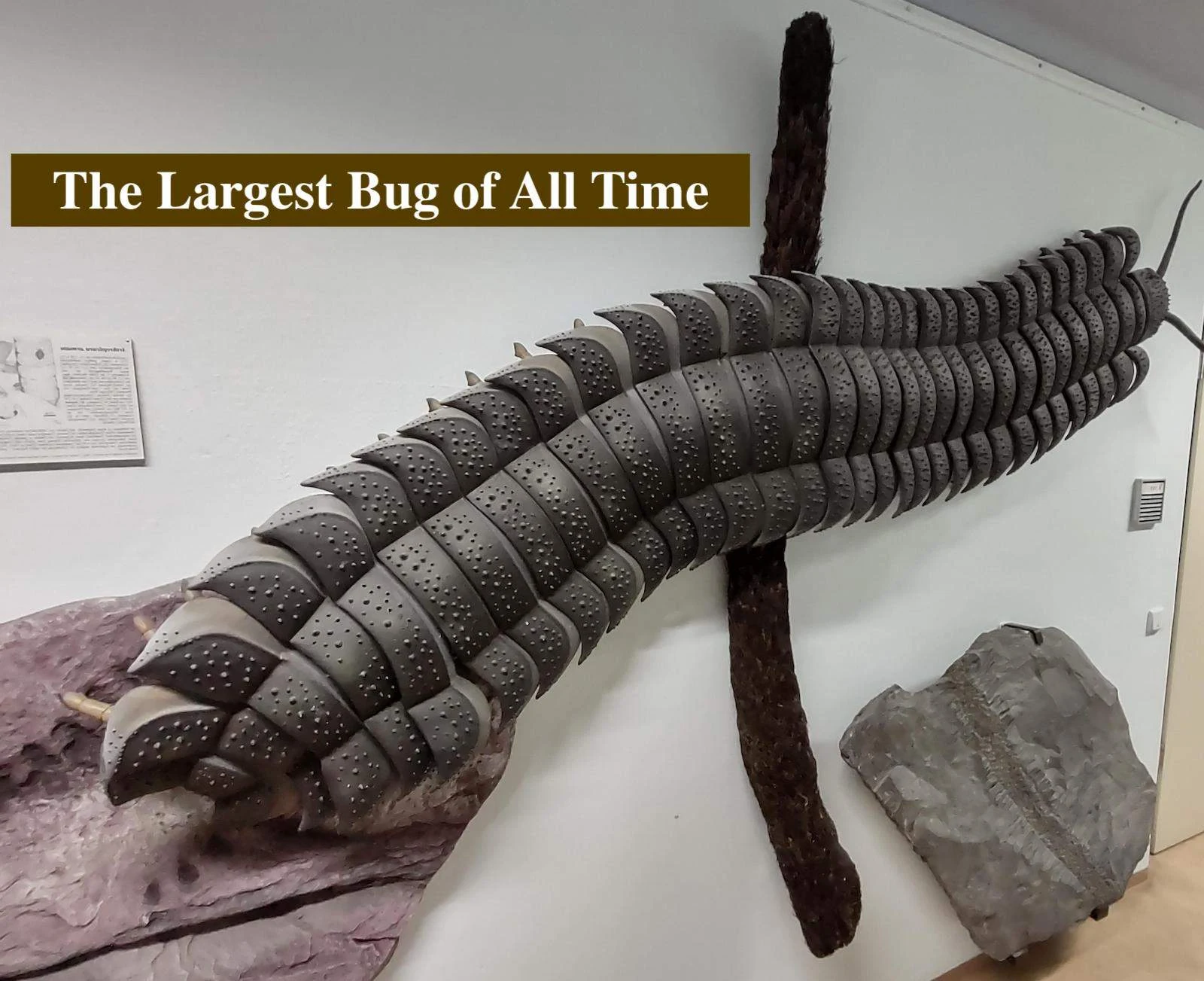The Largest Bug of All Time
The crown for the largest bug of all time goes to the Arthropleura, an extinct genus of millipedes that roamed the Earth during the Carboniferous Period, roughly 345 to 290 million years ago. These behemoths weren't exactly cuddly creatures, resembling giant armored centipedes and reaching truly impressive sizes.
The giant extinct invertebrate Arthropleura resembled some modern millipedes, but could grow to be more than one-and-a-half feet wide, and may sometimes have been more than six feet long. Reconstruction of the giant millipede Arthropleura from the Pennsylvanian and earliest Permian of North America and Europe.
Size and Appearance
Imagine a creature resembling a modern millipede, but blown up to the size of a small car! Arthropleura could grow up to 2.5 meters (8.2 feet) long and 1.5 meters (5 feet) wide, with some estimates suggesting even larger individuals might have existed. Their flattened bodies were composed of approximately 30 jointed segments, each covered by hard plates for protection. Unlike their smaller millipede cousins, they likely lacked any visible legs on most segments, instead propelling themselves with powerful muscles beneath their armored plates.
 |
| A model of The Largest Bug of All Time |
The flattened body of Arthropleura is composed of approximately 30 jointed segments, each of which was covered by two side plates and one center plate. The ratio of pairs of legs to body segments was approximately 8:6, similar to some present-day millipedes. Typically, the body armor of Arthropleura fell apart after the death of the animal, and only individual segments or plates were preserved as fossils.
Habitat and Diet
These giants thrived in the lush, swampy environments of the Pennsylvanian and earliest Permian periods (about 320 to 290 million years before present), scavenging for decaying plant matter and possibly even preying on smaller creatures. Their powerful mouthparts and robust bodies suggest they were well-adapted to their role as top predators in their ecosystem.
Arthropleura became extinct soon after the end of the Carboniferous
period, when the moist climate began drying out, reducing the
rainforests of the Carboniferous, and allowing the desertification
characteristic of the Permian.
 |
| Largest Land-Dwelling “Bug” of All Time. A life size model of a giant millipede, Arthropleura |
Fossil Discoveries
What Do We Find in the Fossils?
Exoskeleton fragments: The most common fossil evidence of Arthropleura are fragments of their armored exoskeletons. These hardened plates, made of calcium carbonate, protected the creatures from predators and harsh environments. Fossil remains of these plates can reveal details about the size and shape of the body segments, as well as the number of legs.
Tracks: These giant millipedes left behind impressive footprints in the soft sediments of the Carboniferous swamps. These tracks can tell us about their gait, speed, and even their preferred habitats.
Gut contents: In rare cases, fossilized remains of plant material have been found within the fossilized exoskeletons, providing clues about what these creatures ate.
Unfortunately, nobody has yet found a complete large individual of Arthropleura. One partial body fossil from southwestern Germany has a length of 90 cm (3 ft.). A trackway ascribed to a large Arthropleura on a Pennsylvanian-age sandstone surface from Nova Scotia (Canada) comprises two parallel rows of small imprints and is 50 cm (19.7 in.) wide.
It is estimated that the maker of this track was at least 1.7 m (5.6 ft.) long. Similar trackways have also been discovered in the United States and in Scotland. The size of some isolated armor segments indicates that Arthropleura adults could attain a length of at least 2 m (6.6 ft.).
The only even larger arthropod was the aquatic Early Devonian “sea scorpion” Jaekelopterus, which, based on one isolated chelicera (pincer-like mouth part), reached an estimated length of 2.5 m (8.2 ft.).
 |
| Fossil of Arthropleura, an extinct arthropod- Took the photo at Senckenberg Museum of Frankfurt Photo: Sven Tränkner |
Notable Arthropleura Fossil Discoveries
Joggins, Nova Scotia: In 1833, huge tracks measuring up to 50 cm wide were discovered in Nova Scotia, sparking the initial scientific interest in Arthropleura.
East Lothian, Scotland: In 1978, a nearly complete exoskeleton fragment was found in Scotland, estimated to be around 2.6 meters long. This provided valuable insights into the anatomy and size of these creatures.
Northumberland, England: In 2018, a fragment of an exoskeleton was discovered in England, estimated to be from an individual that reached a staggering 2.5 meters long and 55 cm wide, making it the largest Arthropleura fossil ever found.
Various Footprints and Trackways: Arthropleura's impressive size left behind a trail of equally impressive footprints across Carboniferous landscapes. These trackways, found in sites like Scotland, Germany, and North America
See also:Crinoids: The Fossils That Inspired 'Alien'
The Largest Ammonite Ever Found?
The Largest Insect Ever Existed Was a Giant 'Dragonfly'
Remarkable 'Alien-Looking' Fossil Found in Australia

%20(1).webp)






